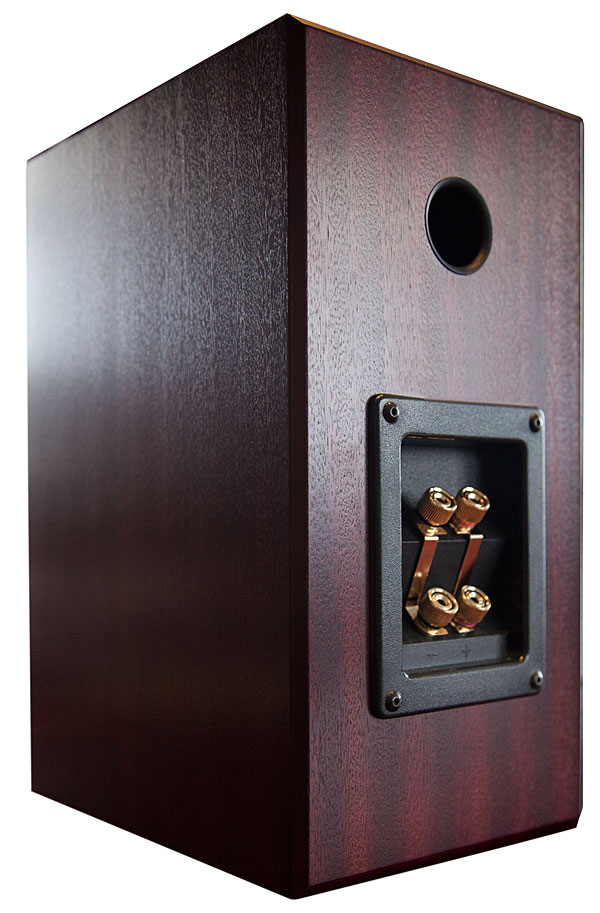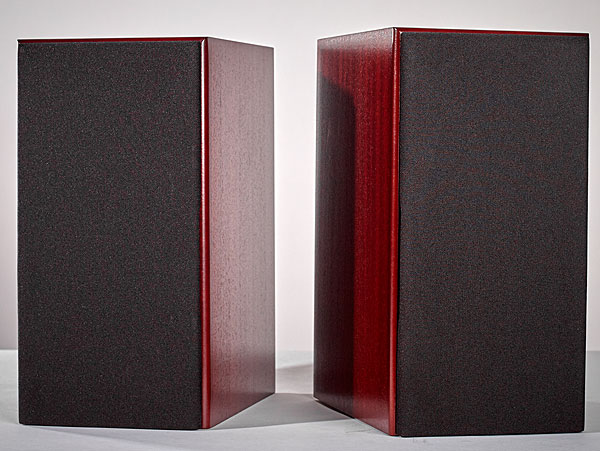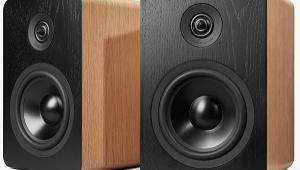*Sigh* I am hoping to purchase a pair of these very speakers when I move this Summer, specifically because they are NOT choosy about placement. 6 inches from the back wall is as close as I have found for ANY manufacturer of bookshelf speakers, and the fact that they can be as close as 2 feet apart, or as far as 8? I encourage you to do the following: Those other speakers that cost under two grand that you mention toward the end of your review? Download the manufacturer's manuals for ALL of them, and see what they recommend for placement. If these Totems can really sound good a foot from the back wall, I'm sold.
Totem Acoustic Sky Loudspeaker Review

AT A GLANCE
Plus
Impressive dynamics
Extended bass for a compact speaker
Solid build quality
Minus
Finicky about setup and placement
THE VERDICT
The Totem Acoustic Sky delivers dynamic, exciting sound for a compact speaker, though it requires careful placement and equipment-matching for best results.
Compact “bookshelf” speakers have their advocates, but I'll admit up front that they've never been my bag. I guess you could say there's something about the stateliness of floorstanding towers that appeals to my personal taste. And then there's the problem of the shelf itself: every time I've tried to listen to compact speakers installed in a place where books would typically sit, I've been thoroughly unimpressed with the sound. Flat imaging, indistinct bass—to me, those are the hallmarks of shelved speakers. Not a problem for background music, but for critical listening, stands are a must.
Canada's Totem Acoustic is a company that makes a wide range of bookshelf speakers (along with floorstanding, on-wall, and architectural speakers, and also subwoofers). And while Totem seems fine with applying the bookshelf label to its more compact models, they also provide highly specific recommendations for getting the best sound from them. The Sky ($1,850/pair), for example, is meant for placement on stands 6 inches to 3 feet from a rear wall and 2 to 8 feet apart. Totem further stresses the need for at least 70 to 100 hours of break-in time (more on that in a bit). To me, there's nothing casual about those directions; Totem clearly designed the Sky not for background/bookshelf listening, but for serious sound.

The Sky's looks aren't overly fancy, but it does exude a sense of quality and fine craftmanship. The speaker's 6.35 x 12 x 9-inch (W x H x D) cabinet is notably slimmer than a typical boxy bookshelf speaker, and it comes in satin white, black, and mahogany finishes. Lock mitered joints help create a seamless appearance, while internal borosilicate dampening, according to Totem, “controls energy release yet keeps the cabinet musically alive.” Twin pairs of high-quality, gold-plated binding posts are provided on the back panel, and the speaker also comes with magnetically attached grilles.
On the specs front, the Sky's frequency response is rated at 48 Hz - 29.5 kHz (± 3 dB), impedance at 8 ohms, and sensitivity at 87 dB. The two-way ported design uses a first-order crossover that divides up frequencies headed to the speaker's 5-inch mid-bass driver and 1.3-inch tweeter at 2.5 kHz. A 500-watt peak power handling capability means it can be mated with a wide range of amplifiers, though the 150 watts-per-channel Hegel Music Systems H190 integrated amp that I primarily used for testing was more than up to the task of driving the compact Totems.
Setup
Along with the Hegel H190 integrated, other gear I used for my testing included a Pioneer BDP-88FD universal disc player and an Elac Discovery music server connected to the H190's coaxial and optical digital inputs, respectively. Speaker cables used were Nordost Purple Flare. A Paradigm Defiance V12 subwoofer and Anthem STR integrated amplifier (review on page TK) were also briefly added to the mix during my evaluation, but for the most part I listened to the Sky minus the subwoofer and the Anthem room correction processing.

Upon first setting the Skys up and doing some casual listening, the compact speaker's extended highs and generous bass was immediately apparent. When I eventually sat down for a more critical listening session, however, my impressions were mixed: The Sky's sound had a uptilted quality that I found a bit fatiguing. After poring through Totem's manual, I opted to carefully follow the written instructions, first breaking in the speakers for the recommended 70-100 hours, and then installing them a foot out from my room's back wall and 7.5 feet apart from each another. (Speakers typically get a wider spread in my 16-foot-wide by 20-foot-deep listening room.) I also did a tweaky audiophile thing I hadn't done previously: fill my metal speakers stands with sand to deaden them and provide a more massive foundation.
Performance
The end result of all this fussing, mussing, and adjustment-making was better sound. The presentation was more balanced, the imaging wide and deep, and the Sky's treble, while still more zippy than what I'm used to hearing from the GoldenEar Technology Triton Five towers that regularly sit in my listening room, more open and less fatiguing. Yes, sometimes it's good to do exactly as you're told.
- Log in or register to post comments



I've owned Totem speakers for years (Forests and Rainmakers) and they are very good. However, Totem goes full-in on the audiophile-nonsense. The idea that any speaker could possibly require 70-100 hours of break-in is factory-farm grade BS.

The fact that the cables used are even mentioned negates the whole article for me.
Of course, the manufacturer of the particular cable has an ad right by the article. And if the commenter above thinks that Totem goes full-in on nonsense, he should click on the ad and see what nonsense really is.

Are you going to measure these speakers? Based on some other measurements I have seen from Totem speakers, I would say they are all hype, and no substance as they appear to have some very large resonances.
https://www.soundstage.com/index.php?option=com_content&view=article&id=...
https://www.soundstage.com/index.php?option=com_content&view=article&id=...

Always liked the sound of Totems. Their imaging has always been outstanding among other attributes.
As far as cables are concerned; I dare you to connect your speakers with a single fine strand of wire and listen. Then connect them with any decent audiophile cable and listen again.
Condemning a free internet publication for advertising is like saying that everybody should work for free in this world and making an honest living is a sin. Sounds like a perverted form of communism or anarchy to me.

You misspelled "audiophool". Also, I don't think anarchy means what you think it means.































































